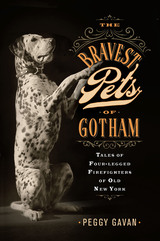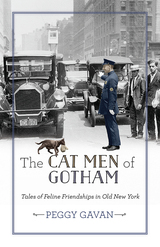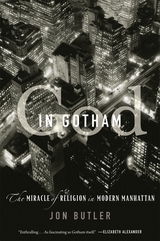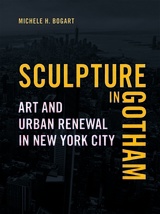
The Bravest Pets of Gotham takes readers on a fun historical tour of Old New York, sharing touching and comical stories about the bond between FDNY firefighters and their four-legged or feathered friends. The book contains more than 100 astonishing, emotional, and sometimes hilariously absurd tales of the FDNY animal mascots whose extraordinary intelligence, acts of bravery, and funny antics deserve to be remembered. Some anecdotes depict fire companies that broke the one-pet rule and welcomed a veritable menagerie of animals into their firehouses, including goats, turtles, and even monkeys. Whether you are an animal lover, a history buff, or a fan of firefighting, The Bravest Pets of Gotham is full of stories that will thrill and amuse you.

The nineteenth century was a rough time to be a stray cat in New York City. The city’s human residents dealt with feline overpopulation by gassing unwanted cats or tossing them in rivers. But a few lucky strays were found by a diverse array of men—including firemen, cops, athletes, and politicians—who rescued them from the streets and welcomed them into their homes and hearts.
This book tells the stories of these heroic cat men of Gotham and their beloved feline companions. Not only does it introduce us to some remarkable men, but we get to meet many extraordinary cats as well, from Chinese stowaways prowling the Chelsea Piers to the sole feline survivor of the USS Maine explosion. Among the forty-two profiles, we find many feline Cinderella stories, as humble alley cats achieved renown as sports team mascots, artists’ muses, and even presidential pets.
Sure to appeal to cat fanciers and history fans alike, The Cat Men of Gotham will give you a new appreciation for Old New York and the people and animals who made it their home. As it takes you on a journey through the streets of Manhattan and Brooklyn, it will amuse and astound you with tales of powerful men and their pussycats.

A master historian traces the flourishing of organized religion in Manhattan between the 1880s and the 1960s, revealing how faith adapted and thrived in the supposed capital of American secularism.
In Gilded Age Manhattan, Catholic, Jewish, and Protestant leaders agonized over the fate of traditional religious practice amid chaotic and multiplying pluralism. Massive immigration, the anonymity of urban life, and modernity’s rationalism, bureaucratization, and professionalization seemingly eviscerated the sense of religious community.
Yet fears of religion’s demise were dramatically overblown. Jon Butler finds a spiritual hothouse in the supposed capital of American secularism. By the 1950s Manhattan was full of the sacred. Catholics, Jews, and Protestants peppered the borough with sanctuaries great and small. Manhattan became a center of religious publishing and broadcasting and was home to august spiritual reformers from Reinhold Niebuhr to Abraham Heschel, Dorothy Day, and Norman Vincent Peale. A host of white nontraditional groups met in midtown hotels, while black worshippers gathered in Harlem’s storefront churches. Though denied the ministry almost everywhere, women shaped the lived religion of congregations, founded missionary societies, and, in organizations such as the Zionist Hadassah, fused spirituality and political activism. And after 1945, when Manhattan’s young families rushed to New Jersey and Long Island’s booming suburbs, they recreated the religious institutions that had shaped their youth.
God in Gotham portrays a city where people of faith engaged modernity rather than foundered in it. Far from the world of “disenchantment” that sociologist Max Weber bemoaned, modern Manhattan actually birthed an urban spiritual landscape of unparalleled breadth, suggesting that modernity enabled rather than crippled religion in America well into the 1960s.

“Are you there, God? It’s me, Manhattan…Butler…argues that far from being a Sodom on the Hudson, New York was a center of religious dynamism throughout the 20th century.”
—Wall Street Journal
“What a pleasure it is to take a tour of Manhattan’s sacred past led by one of the nation’s preeminent religious historians.”
—Christianity Today
“A masterwork by a master historian…God in Gotham should be an instant classic.”
—Jonathan D. Sarna, author of American Judaism
In Gilded Age Manhattan, religious leaders agonized over the fate of traditional faith practice amid chaotic and sometimes terrifying change. Massive immigration, urban anonymity, and the bureaucratization of modern life tore at the binding fibers of religious community.
Yet fears of the demise of religion were dramatically overblown. Jon Butler finds a spiritual hothouse in the supposed capital of American secularism as Catholics, Jews, and Protestants peppered the borough with sanctuaries. A center of religious publishing and broadcasting, by the 1950s it was home to Reinhold Niebuhr, Abraham Heschel, Dorothy Day, and Norman Vincent Peale. While white spiritual seekers sometimes met in midtown hotels, black worshippers gathered in Harlem’s storefront churches. Though denied the ministry almost everywhere, women shaped congregations, founded missionary societies, and fused spirituality and political activism. God in Gotham portrays a city where people of faith embraced modernity and thrived.

Focusing on specific people, agencies and organizations, and both temporary and permanent projects, from the 1960s forward, Michele H. Bogart reveals the changing forms and meanings of municipal public art. Sculpture in Gotham illustrates how such shifts came about at a time when art theories and styles were morphing markedly, and when municipalities were reeling from racial unrest, economic decline, and countercultural challenges—to culture as well as the state. While sculptural installations on New York City property took time and were not without controversy, Gotham’s processes and policies produced notable results, providing precedents and lessons for cities the world over.
READERS
Browse our collection.
PUBLISHERS
See BiblioVault's publisher services.
STUDENT SERVICES
Files for college accessibility offices.
UChicago Accessibility Resources
home | accessibility | search | about | contact us
BiblioVault ® 2001 - 2024
The University of Chicago Press









